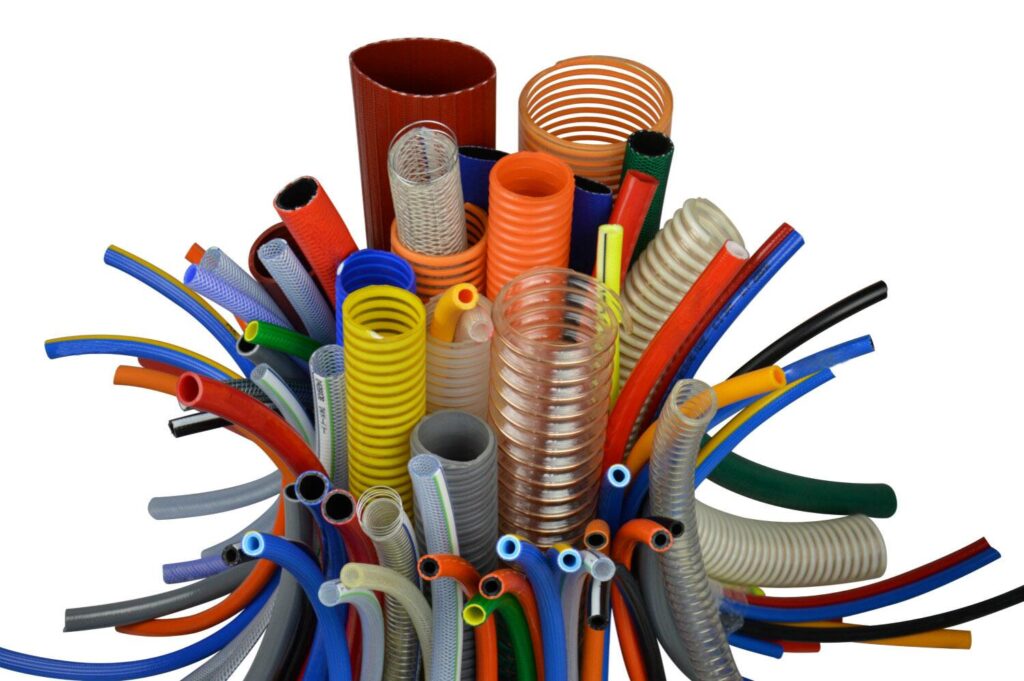
The demand for high-quality PVC HOSE Manufacturer has surged in various industries, including agriculture, construction, and manufacturing. This increase in demand necessitates a closer look at the intricate manufacturing process that transforms raw materials into durable and reliable PVC hoses. This article delves into the various stages of PVC hose production, highlighting the techniques and technologies employed in the manufacturing process.
1. Raw Material Preparation
The production of PVC hoses begins with the preparation of raw materials, primarily polyvinyl chloride (PVC) resin, plasticizers, stabilizers, and additives.
- PVC Resin: The primary component, PVC resin, is a white powder derived from petrochemical products. It serves as the backbone of the hose, providing structural integrity and flexibility.
- Additives: Various additives are blended with the PVC resin to enhance its properties. Plasticizers improve flexibility, while stabilizers help protect the material from degradation due to heat and UV exposure. Other additives may include colorants, antioxidants, and flame retardants, depending on the desired characteristics of the final product.
2. Compounding
Once the raw materials are prepared, they undergo a compounding process to create a homogenous mixture. This step is crucial for ensuring consistent quality and performance in the final product.
- Mixing: The PVC resin and additives are combined in a high-speed mixer, where they are thoroughly blended. This process ensures that the additives are evenly distributed throughout the PVC material.
- Pelletizing: The compounded material is then extruded into pellets, which can be easily handled and stored for subsequent processing. These pellets are a critical intermediate product in the manufacturing process.
3. Extrusion
Extrusion is a key stage in the production of PVC hoses, where the compounded material is shaped into a continuous length of hose.
- Feeding: The PVC pellets are fed into an extruder, which heats the material and forces it through a die to create the desired hose shape. The extruder consists of a screw mechanism that mixes and melts the PVC while pushing it toward the die.
- Cooling: Once the PVC exits the die, it is cooled to set its shape. This cooling process can involve water baths or air cooling, depending on the specific requirements of the hose being produced.
4. Reinforcement (if applicable)
For certain types of PVC hoses, additional reinforcement may be required to enhance strength and durability.
- Braiding: In some cases, a layer of fabric or wire reinforcement is added to the hose during the extrusion process. This braiding provides added strength and pressure resistance, making the hose suitable for more demanding applications.
- Coiling: After reinforcement, the hose is coiled into rolls or cut into specific lengths for packaging. This coiling process ensures easy handling and transport of the finished product.
5. Quality Control
Quality control is a critical aspect of PVC hose manufacturing, ensuring that the final product meets industry standards and customer expectations.
- Testing: Various tests are conducted on the finished hoses, including pressure testing, tensile strength testing, and flexibility assessments. These tests help identify any defects or weaknesses in the hoses.
- Inspection: Visual inspections are performed to check for any surface imperfections or inconsistencies in the hose. This step is essential for maintaining product quality and reliability.
6. Packaging and Distribution
Once the hoses pass quality control checks, they are prepared for packaging and distribution.
- Packaging: PVC hoses are typically packaged in rolls or coils, depending on their size and application. Protective wrapping may be added to prevent damage during transport and storage.
- Distribution: The packaged hoses are then shipped to distributors, retailers, or directly to customers. Efficient logistics play a vital role in ensuring timely delivery to meet market demand.
7. Sustainability Practices
As environmental concerns grow, many PVC hose manufacturers are adopting sustainable practices to reduce their environmental footprint.
- Recycling Initiatives: Some manufacturers have implemented recycling programs to reclaim and reuse scrap material generated during production. This practice minimizes waste and conserves resources.
- Eco-Friendly Additives: The use of eco-friendly additives and recyclable materials is becoming more common in PVC hose manufacturing. This shift aligns with the increasing demand for sustainable products in the market.
Conclusion: The Future of PVC Hose Manufacturing
The manufacturing process of PVC HOSE Manufacturer involves a series of intricate steps, from raw material preparation to quality control and packaging. As industries continue to evolve, manufacturers must adapt to changing market demands while prioritizing quality, efficiency, and sustainability.
By investing in advanced technologies and sustainable practices, PVC hose manufacturers can enhance their production processes, improve product quality, and contribute to a more sustainable future. As the demand for high-quality PVC hoses grows, understanding the manufacturing process can provide valuable insights for businesses seeking reliable solutions for their fluid transport needs.